Table of Contents
The human body is like an amazing machine with many different parts, each doing something special. Our brain is like a super-smart control center, helping us think, feel, and make decisions. The heart is a powerful pump, sending blood all around to give us energy. Our lungs let us breathe in fresh air and oxygen to stay strong.
Bones are like a sturdy frame, giving our body shape and support. Our skin is our protective shield and helps us feel the world around us. Muscles allow us to move, jump, run, and play. All these parts work together to keep us healthy, strong, and full of life! Keep reading to discover more about these cool body parts and how they help us every day!
Human Body Parts Name
Body parts are the different components that make up the human body. They include organs, tissues, and structures, each with specific functions. For instance, the heart pumps blood, the lungs help in breathing, the brain controls thoughts, and the skin acts as a protective layer. Body parts vary in size and shape, working together to perform essential tasks for survival and daily activities. Many Human Body Parts include the Head, Forehead, Eye, Ear, Nose, Jaw, Neck, Shoulder, Arm, Elbow, Forearm, Wrist, Hand, Palm, and Nail.
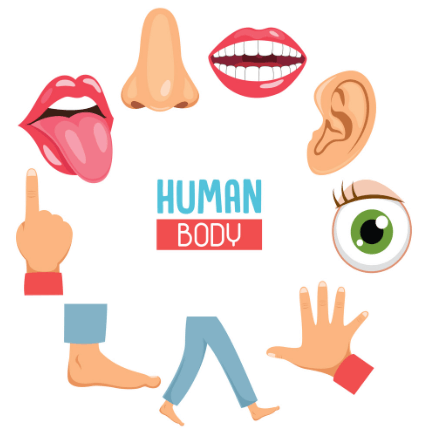
The eyes enable sight, the ears facilitate hearing, and the mouth helps in eating and speaking. Fingers and toes aid in grasping and balance. Understanding these body parts is crucial for comprehending how the human body functions and how to maintain overall health and well-being.
List 25 Body Parts Name
- Head
- Forehead
- Eye
- Ear
- Nose
- Jaw
- Neck
- Shoulder
- Arm
- Elbow
- Forearm
- Wrist
- Hand
- Palm
- Fingers
- Thumb
- Chest
- Abdomen
- Navel
- Leg
- Thigh
- Ankle
- Heel
- Foot
- Toes
List of 50 Body Parts Names
We have discussed a few different body parts below in a tabulated way:
| List of 50 Body Parts Names | ||||
| Head | Chest | Feet | Nails | Brain |
| Eyes | Back | Toes | Armpits | Skull |
| Ears | Spine | Hair | Ribs | Tonsils |
| Nose | Abdomen | Forehead | Lungs | Spleen |
| Mouth | Hips | Cheeks | Heart | Pancreas |
| Neck | Legs | Chin | Liver | Larynx |
| Shoulders | Thighs | Jaw | Stomach | Uvula |
| Elbows | Knees | Wrist | Kidneys | Trachea |
| Hands | Calves | Palm | Intestines | Esophagus |
| Fingers | Ankles | Knuckles | Bladder | Arms |
Name of Body Parts in Hindi
हमारे शरीर में बहुत सारे दिलचस्प अंग होते हैं! हमारे पास दो आँखें हैं, जिनसे हम रंग-बिरंगे दुनिया को देख सकते हैं। कान हमें आवाज़ें सुनने में मदद करते हैं, और मुँह से हम मीठे शब्द बोल सकते हैं। हाथों से हम खेलते हैं, खाते हैं, और बहुत कुछ करते हैं। पैरों से हम दौड़ते हैं और चलते हैं। नाक से हम सुगंधित फूलों की खुशबू ले सकते हैं। शरीर के ये सभी अंग मिलकर हमें काम करने और मस्ती करने में मदद करते हैं। Some of the names of body parts in hindi have been discussed below:
| क्र. | शरीर के अंगों के नाम हिंदी में |
|---|---|
| 1 | बांह, भुजा |
| 2 | हाथ की अंगुलियाँ |
| 3 | हाथ का अंगूठा |
| 4 | आँख |
| 5 | होंठ |
| 6 | एड़ी |
| 7 | पैर की अंगुली |
| 8 | कंधे |
| 9 | सिर |
| 10 | बाल |
| 11 | कनपटी |
| 12 | कलाई |
| 13 | कमर |
| 14 | कान |
| 15 | काँख |
| 16 | कोहनी |
| 17 | खोपड़ी |
| 18 | धड़ |
| 19 | हड्डी |
| 20 | हथेली |
| 21 | त्वचा / चमड़ी |
| 22 | चेहरा |
| 23 | पुरुष की छाती |
| 24 | स्त्री की छाती |
| 25 | जबड़ा |
| 26 | थन |
| 27 | जांघ |
| 28 | जीभ |
| 29 | बालों की लट |
| 30 | जोड़ |
| 31 | गर्दन |
| 32 | गर्भाशय |
| 33 | मूंछ |
| 34 | गला |
| 35 | गाल |
| 36 | गुर्दा |
| 37 | गोद |
| 38 | घुटना |
| 39 | नथुना |
| 40 | नस |
| 41 | नाक |
| 42 | नब्ज |
| 43 | पलक |
| 44 | पसली |
| 45 | पीठ |
| 46 | पेट |
| 47 | लिंग |
| 48 | योनि |
| 49 | रक्त |
| 50 | ठुड्डी |
| 51 | तलवा |
| 52 | तालू |
| 53 | दाढ़ी |
| 54 | दांत |
| 55 | दिमाग |
| 56 | नाखून |
| 57 | पैर |
| 58 | बरौनी |
| 59 | भौंह |
| 60 | मुट्ठी |
| 61 | मुख |
| 62 | ह्रदय |
| 63 | हाथ |
| 64 | टांग |
| 65 | पेट |
| 66 | हंसमुख |
| 67 | मूंछ |
| 68 | कुल्हा |
| 69 | नाभि |
| 70 | माथा |
| 71 | टखना |
| 72 | शरीर |
| 73 | आंत |
| 74 | छोटी आंत |
| 75 | बड़ी आंत |
| 76 | गुदा |
| 77 | कंठ |
| 78 | नस |
| 79 | पंजा |
| 80 | पसली |
| 81 | माँसपेशी |
| 82 | पिंडली |
| 83 | कान का परदा |
| 84 | गर्भाशय |
| 85 | बालों का जूडा |
| 86 | तर्जनी |
| 87 | दाढ़ |
| 88 | नाड़ी |
| 89 | पित्त |
| 90 | तिल्ली |
| 91 | भ्रूण |
| 92 | मूत्राशय |
| 93 | स्वास नली, कंठ नाल |
| 94 | जिगर |
| 95 | फेफड़ा |
Different Types of Body Parts
Body parts can be broadly characterized into external body parts and internal body parts based on their location. External body parts are visible and are located on the surface of the body, like the eyes, hands, and ears. Internal body parts, however, are hidden inside the body, protected by skin and other tissues. These include important organs such as the heart, lungs, and stomach. While external body parts help us interact with the world, internal body parts play a vital role in keeping our body functioning well.
| Different Body Parts | |
| Body parts | Description |
| External body parts | External body parts are visible structures on the body’s surface, including skin, limbs, eyes, ears, nose, mouth, and hair, facilitating interaction with the external environment. |
| Internal body parts | Internal body parts are concealed within the body, performing essential functions. Examples include the heart, lungs, brain, liver, kidneys, and stomach, vital for bodily processes and survival. |
External Body Parts Name
External body parts are those structures of the human body that are located on the outside. They are visible and accessible from the body’s surface. Examples include the skin, limbs (arms and legs), eyes, ears, nose, mouth, and hair. These parts are involved in interactions with the external environment, sensory perception, and physical activities.
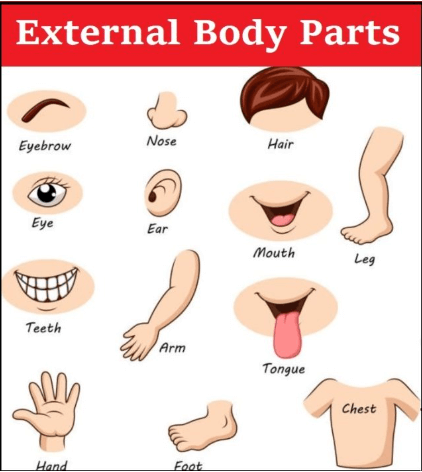
| External Body Parts Name | |
| External Body Parts | Description |
| Head | The head is the upper part of the body containing the brain and sensory organs like the nose, ears, eyes, and mouth. |
| Skin | The skin is the largest organ of the body. It serves as a protective barrier against external elements. |
| Limbs (arms and legs) | The limbs (arms and legs) are used for movement, manipulation, and interaction with the environment. |
| Eyes | The ears are organs of vision, allowing us to perceive the world. |
| Ears | The ears are organs of hearing and balance, enabling us to detect sound and maintain equilibrium. |
| Nose | The nose is used for smelling and breathing, aiding in the detection of scents and inhalation of air. |
| Mouth | The mouth is involved in eating, speaking, and tasting food. |
| Neck | The neck is the part of the body that connects the head to the torso. |
| Shoulders | The shoulders are broad bones supporting the upper arms and connecting them to the torso. |
| Chest | The chest is the front part of the body between the neck and the abdomen, housing vital organs like the heart and lungs. |
| Hips | The hips are the bony areas on the sides of the upper buttocks. |
| Buttocks | It is a muscular area at the back of the body, that supports the body in a sitting position. |
Functions of External Body Parts
The external body parts serve various functions, depending on their specific structures. Each external body part has a specific function that contributes to the overall well-being and functioning of the human body. Here we have discussed a few functions of external body parts:
- Skin: Protects the body from external elements, regulates temperature, and houses sensory receptors for touch, pressure, pain, and temperature.
- Eyes: Enable vision, allowing individuals to perceive their surroundings and interpret visual information.
- Ears: Facilitate hearing and help maintain balance through the vestibular system.
- Nose: Functions as the primary organ of smell and also plays in the sense of taste by detecting different odors.
- Mouth: Involved in activities such as eating, speaking, and breathing. It also houses the taste buds, which are essential for the sense of taste.
- Fingers and Toes: Aid in tasks requiring precision, balance, and coordination, such as writing, playing musical instruments, and walking.
- Nails: Protect the fingertips and toes, enhance fine touch sensitivity, and aid in activities like grasping and scratching.
- Hairs: Provides insulation and protection for the skin, especially in sensitive areas, and can also serve as a sensory organ.
Internal Body Parts Name
Internal body parts are found inside the body, beneath the skin and other outer layers. They are protected by bones and organs and are not visible from the outside. Examples include the heart, lungs, brain, liver, kidneys, stomach, intestines, and pancreas. These parts have crucial roles, such as pumping blood, helping with breathing, and digesting food. They ensure that essential body functions, like circulation, respiration, and digestion, happen properly to keep the body healthy and working well.
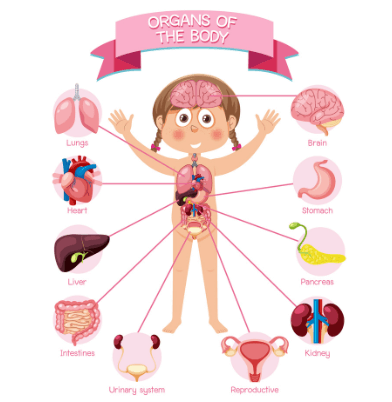
| Internal Body Parts Name | |
| Internal Body Parts | Description |
| Heart | The heart is a muscular organ that pumps blood throughout the circulatory system. |
| Lungs | Lungs are the organs responsible for breathing and exchanging oxygen and carbon dioxide with the blood. |
| Liver | The liver is a vital organ that performs various functions, including detoxification and metabolism. |
| Kidneys | Kidneys are organs that filter waste products from the blood, producing urine for excretion. |
| Stomach | The stomach is the organ where food is broken down and partially digested. |
| Brain | The brain is the central control center of the body, responsible for processing information and regulating bodily functions. |
| Intestines | Intestines are parts of the Digestive System where nutrients are absorbed and the remaining food is further processed. It is divided into two parts: Large intestine and small intestine. |
| Pancreas | The pancreas is a glandular organ involved in regulating blood sugar levels and aiding in digestion. |
Functions of Internal Body Parts
Internal body parts play a vital role in maintaining various physiological functions necessary for human survival. These internal body parts work together harmoniously to maintain the body’s physiological balance and ensure its proper functioning. Here are some functions of important internal body parts.
- Heart: Pumps blood throughout the body, supplying oxygen and nutrients to tissues and organs while removing waste products.
- Lungs: Facilitate the exchange of oxygen and carbon dioxide during breathing, ensuring the body receives oxygen for cellular respiration and expels waste gases.
- Brain: Controls body functions, processes information, enables thinking, emotions, and consciousness, and coordinates voluntary and involuntary movements.
- Liver: Metabolizes nutrients, detoxifies harmful substances, produces bile for digestion, and stores essential nutrients like glycogen.
- Kidney: Filters blood to remove waste products, excess substances, and toxins, regulating the body’s fluid balance, electrolytes, and blood pressure.
- Pancreas: Produces digestive enzymes to break down carbohydrates, proteins, and fats, and regulates blood sugar levels by secreting insulin and glucagon.
Some more Interesting Facts About Body Parts
Below we have discussed a few more interesting facts about the human body parts.
- The strongest muscle in the human body is the masseter, the law muscle.
- Your nose and ears continue growing throughout your entire life.
- The cornea is the only part of the body without blood vessels; it gets oxygen directly through the air.
- The Human Eye can distinguish about 10 million different colors.
- Your skin is the largest organ in your body, weighing about six pounds on average.
- The liver is the only organ that can regenerate itself.
- The Human Brain is about 75% water.
- The small intestine is about 22 feet long, while the large intestine is shorter but wider.
- The fingernails grow faster than the toenails.
- The human stomach’s digestive acids are strong enough to dissolve zinc, but the stomach lining prevents it from harming itself.
Easy Ways to Teach Body Parts Names to Kids
- Action Songs and Rhymes: Use songs like “Head, Shoulders, Knees and Toes”. Kids love music and movement—it helps them remember better.
- Point and Say Game: Say a body part and let them point to it. You can also reverse it—point and let them name it.
- Use Flashcards or Picture Books: Bright, colorful pictures of body parts catch their attention. You can also let them draw or color them.
- Body Part Puzzles: Use simple puzzles that show human bodies. They enjoy matching and fitting the pieces.
- Simon Says: A fun game where you say, “Simon says touch your nose,” etc. This improves listening and recognition.
- Mirror Play: Let them look in the mirror and point to their own body parts. It makes learning personal and fun.
- Use Toys or Dolls: Show body parts on a doll and ask them to do the same on themselves.
- Craft Time: Make a paper body and let them stick or label parts using cutouts.
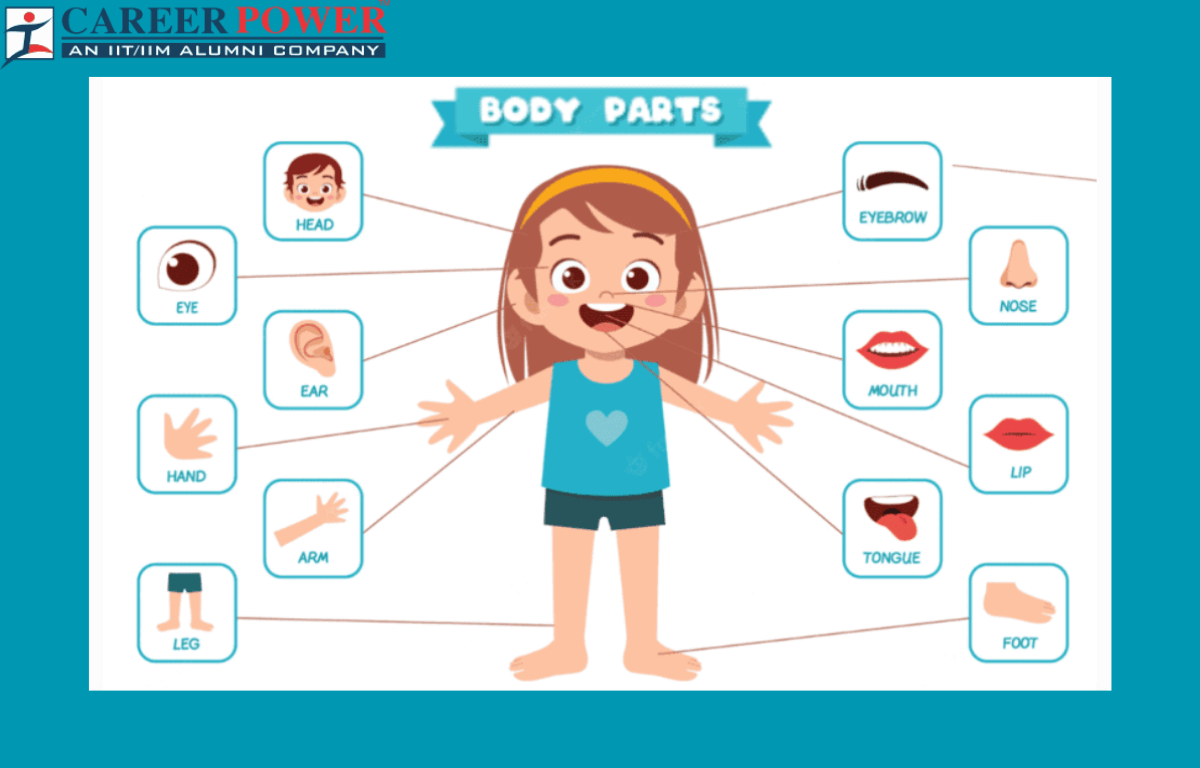

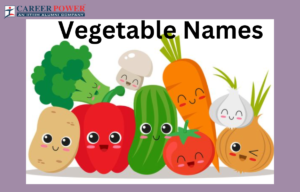 50 Vegetables Name for Kids in English a...
50 Vegetables Name for Kids in English a...
 Flowers Names in English and Hindi, List...
Flowers Names in English and Hindi, List...
 Birds Names in English, List of 50 Birds...
Birds Names in English, List of 50 Birds...









